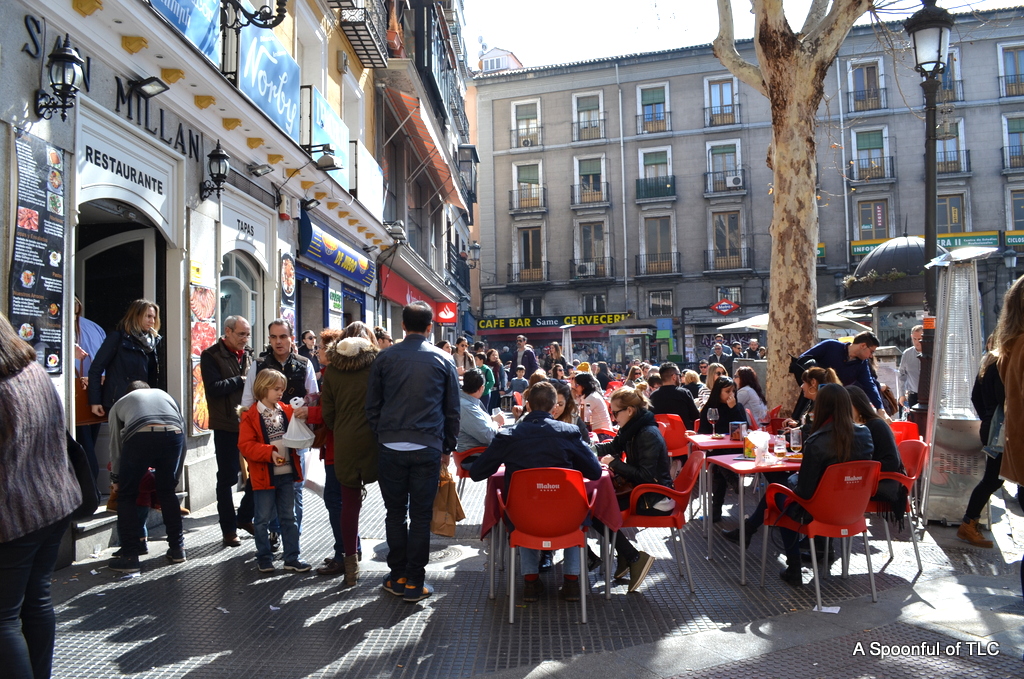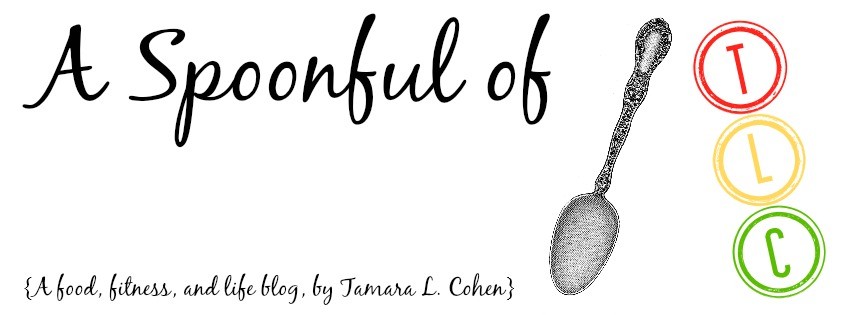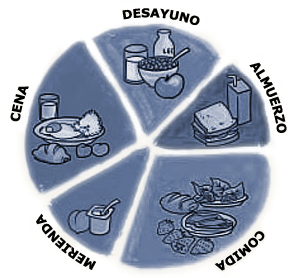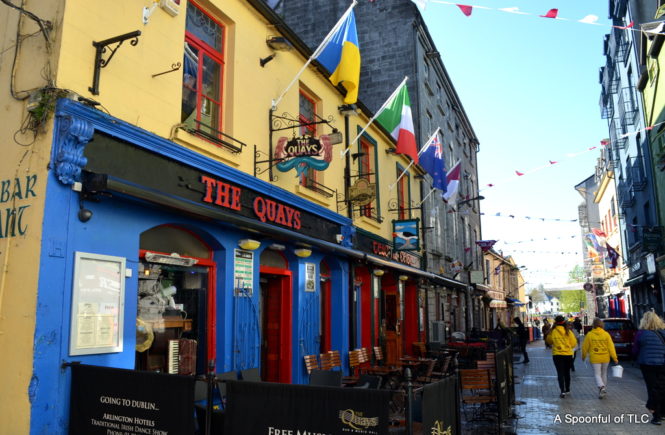Buenas tardes! Happy Friday!
How was this week for you? This week absolutely flew by for me, thanks to working…un poco 
Anyway, for today, I wanted to share five differences I have noticed between Madrid and Philadelphia. I would like to say between Spain and The United States, but I can’t say for sure since I haven’t traveled to everywhere in Spain or the U.S. I’ve been thinking about writing this kind of post for awhile now, but since there are so many differences that I’ve noticed, I’m going to separate them into categories. Today, I’m starting with my favorite thing- FOOD! (And there will likely be more editions to come)
Five Differences Between Madrid and Philadelphia: FOOD
1 // Communal sharing is so normal in Madrid. When you order a drink, it often comes with a little snack or tapa, which is shared among the table. Everyone is putting there forks and grubby fingers into the same dish, and no one bats an eye. This wasn’t something that I find (or found) particularly strange, as I have always been open to sharing food and this is something I do with my friends and family in the U.S, but here, it is the norm. Even if it’s not included, ordering something to share is totally normal and common, and those shared plates often don’t come with little plates to serve yourself. It’s understood that you share, right from the same trough. That picture above shows food I had last night with a friend. Only forks. No plates. Totally normal.
When you order a drink, it often comes with a little snack or tapa, which is shared among the table. Everyone is putting there forks and grubby fingers into the same dish, and no one bats an eye. This wasn’t something that I find (or found) particularly strange, as I have always been open to sharing food and this is something I do with my friends and family in the U.S, but here, it is the norm. Even if it’s not included, ordering something to share is totally normal and common, and those shared plates often don’t come with little plates to serve yourself. It’s understood that you share, right from the same trough. That picture above shows food I had last night with a friend. Only forks. No plates. Totally normal.
2 // Eating outside is valued. Most restaurants and bars have outdoor seating available, or terrazas. Even the little hole-in-the-wall cervecerias have outdoor seating or standing spots. It doesn’t matter that it’s less than 30* outside, you will see people all bundled up and happily eating, drinking, and chatting away under the warmers (or no warmers!). The picture above shows empty tables, but that’s only because they were setting up for dinner and no one was there yet. In Philadelphia, as soon as the temperature drops, the tables are stored inside for the winter and outdoor seating becomes non-existent.
Most restaurants and bars have outdoor seating available, or terrazas. Even the little hole-in-the-wall cervecerias have outdoor seating or standing spots. It doesn’t matter that it’s less than 30* outside, you will see people all bundled up and happily eating, drinking, and chatting away under the warmers (or no warmers!). The picture above shows empty tables, but that’s only because they were setting up for dinner and no one was there yet. In Philadelphia, as soon as the temperature drops, the tables are stored inside for the winter and outdoor seating becomes non-existent.
3 // Meal times are different.
- Breakfast (Desayuno)- when you get up.
- Lunch (Almuerzo)- between 2:00 and 4:00
- Dinner (Cena)- between 9:30 and 11:00 PM!
Fun fact: my first day of work, I showed up with a packed lunch to eat during the break (at 11:00). The other teachers looked at me like some sort of zoo animal that had escaped. Eating that early is completely unheard of. Instead, people have a snack around this time- coffee and cookies or crackers, a small sandwich. Then they eat a large lunch at the time noted above and then when we Americans eat dinner (6:00 or 7:00), they eat another snack, or merienda, such as a sandwich, to hold them over until dinner.
Personally, I have adapted to the designated eating times only by default. I eat breakfast when I get up, have a few snacks at school, and then eat lunch when I get home (which is usually 2:30 or 3:30). I eat a snack around 5:00 (not a sandwich, though) and then eat dinner around 9:00 or 10:00 when I get home from lessons. It’s more out of eating when I have time and less about following the Spanish schedule. Some nights, I still eat dinner at 7:30. You can take the girl out of America, but you can’t take America out of the girl
4 // Types of foods are different.
A typical Spanish breakfast is usually includes cafe y pan (crossiant, baguette, etc) with jelly or butter or crushed tomato and olive oil. Eggs? NO. Pancakes/ waffles/ french toast? Absolutely not. Breakfast meat? Nope. And my beloved oatmeal? Haha…no.
Eating a couple cookies during the day is normal. I think in the United States, we have such an “all or none” attitude towards food. “You shouldn’t eat cookies during the day! This is a dessert! And only have one! You will become obese with that kind of eating!”. Are they eating sugar-laden cookies all day? No. But I often see people having a cup of coffee with a few biscuit-ish cookies as a snack. They actually have that whole moderation thing down.
Lunch (so I have been told) is the largest and most important meal. Spaniards eat many of the things that we consider to be “dinner foods” (meats, grains, soups, sauces, pasta, etc) for lunch. And they eat together, as a family, when possible. In the United States (Philly), lunch is soup, a sandwich, a salad, leftovers.
A snack before dinner isn’t fruit or yogurt, it’s usually a sandwich.
Dinner is much lighter here in Spain. People eat omelettes or something light. In the U.S (presumably because we eat earlier), we eat all of the heavier foods- pizza, pasta, meats, grains, etc.
*Since I live “on my own”, as in, not with Spaniards, I am only speaking about these things from what I have been told. I still eat with my American habits of lighter lunches and larger dinners. And oatmeal or eggs for breakfast.
Especially in the supermarket! Processed foods are often similar in price to what I would typically see in Philadelphia, but unprocessed (healthy) food, is much, much less expensive. Spinach, kale, lettuce, fruits, vegetables are significantly less money. Bags of spinach go for one Euro (about a dollar)…crazy. Fresh olives, fresh bread, fresh cheese- all less expensive. And big tubs of Greek yogurt? One Euro. Small, individual containers of yogurt? About .30. Big, fresh baguettes….less then one Euro!! Get on board, Philly. It makes it so much more affordable to have a healthy and flavorful diet. (It is also worth mentioning that wages are lower here, so that may play into it. However, it doesn’t change the fact that healthy foods are made affordable for all people, whereas in the U.S, healthy foods are usually at a much higher price point).
In restaurants, I think food is pretty comparable to what is found in the United States. The only difference I really notice is that trendy, cool restaurants in the city are often very affordable (not necessarily cheap), but affordable, making a “night out” in the city less damaging to the wallet.



